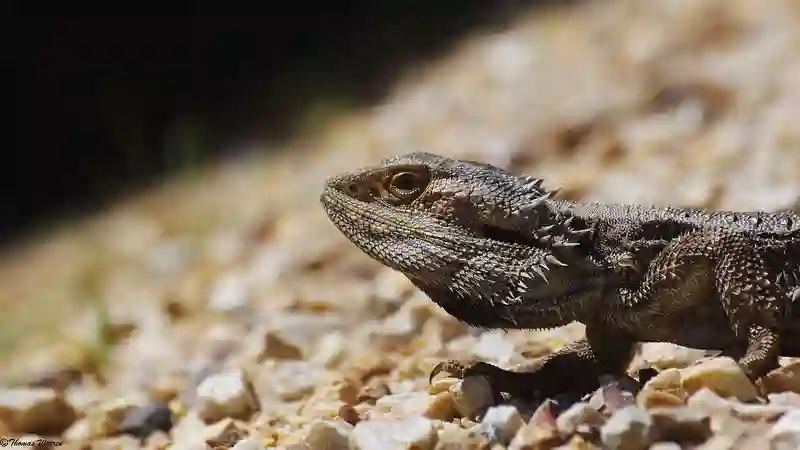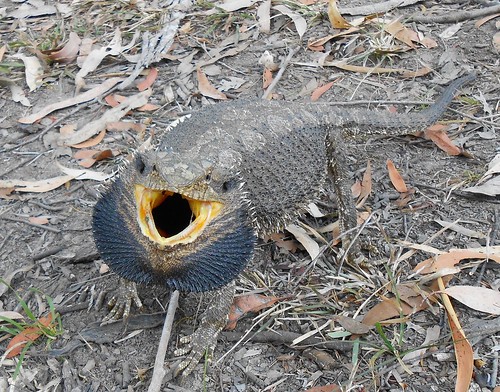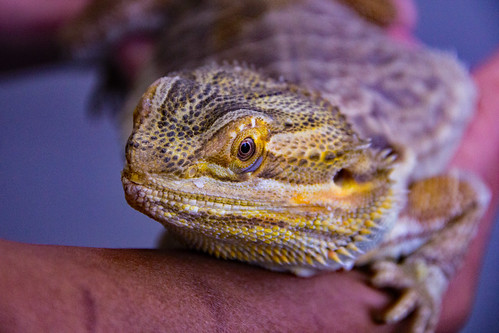Bearded dragons may turn black when they are dying, but it is not a guaranteed sign.
If a bearded dragon’s beard and underside stay black after death, it may be a sign that the lizard was already sick or dying
Among the other reasons for a bearded dragon turning black are stress, illness, or a desire to mate.
Color Changes in Bearded Dragons
Bearded dragons are capable of changing color for various reasons. They can change color in response to environmental factors, mood, and health conditions. It is essential for bearded dragon owners to understand these color changes to ensure the health and well-being of their pets.
Do Bearded Dragons Turn Black When They Die?
Bearded dragons can indeed turn black when they die, but this is not always the case. The darkening of their skin can be an indication of death, but it is essential to look for other signs to confirm the situation.
These may include a lack of movement, absence of breathing, and an unresponsive reaction to touch.
It is crucial to consult a veterinarian specializing in reptiles if you suspect your bearded dragon has passed away. They can confirm the cause of death and provide guidance on proper handling and disposal of the remains.
Other Reasons for Color Changes in Bearded Dragons
Although bearded dragons can turn black when they die, color changes can occur for several other reasons. Understanding these reasons can help you better care for your bearded dragon.
1. Thermoregulation: Bearded dragons can change color to help regulate their body temperature. In colder environments, they may darken their skin to absorb more heat. Conversely, in warmer environments, they can lighten their skin to reflect heat.
2. Mood: A bearded dragon’s color can change depending on its mood. Stress, fear, or aggression can cause them to darken their skin or display bold patterns.
3. Shedding: As bearded dragons grow, they periodically shed their skin. During the shedding process, their skin can appear dull or discolored.
4. Illness or injury: A change in color can be a sign of an underlying health issue. If you notice an unusual or sudden color change, consult a veterinarian to determine the cause and appropriate treatment.
How to Properly Care for a Bearded Dragon
To keep your bearded dragon healthy and happy, follow these essential care tips:
1. Provide proper enclosure: Ensure your bearded dragon has a spacious and well-ventilated enclosure with a basking area, hiding spots, and a temperature gradient.
2. Maintain appropriate temperatures: Bearded dragons require a basking area with a temperature between 95-110°F (35-43°C) and a cooler area between 75-85°F (24-29°C).
3. Offer a balanced diet: A balanced diet should consist of insects, vegetables, and fruits. Juveniles require a higher protein intake, while adults need more vegetables.
4. Provide UVB lighting: Bearded dragons need UVB lighting to synthesize vitamin D3 and properly absorb calcium. Ensure that the UVB bulb is replaced every 6-12 months to maintain optimal output.
5. Maintain proper humidity: The ideal humidity level for bearded dragons is between 30-40%. Use a hygrometer to monitor the humidity levels and mist the enclosure as needed.
6. Keep the enclosure clean: Regularly clean and disinfect the enclosure to prevent the buildup of harmful bacteria and parasites.
7. Regular health check-ups: Schedule routine veterinary check-ups to monitor your bearded dragon’s health and address any potential issues early.


